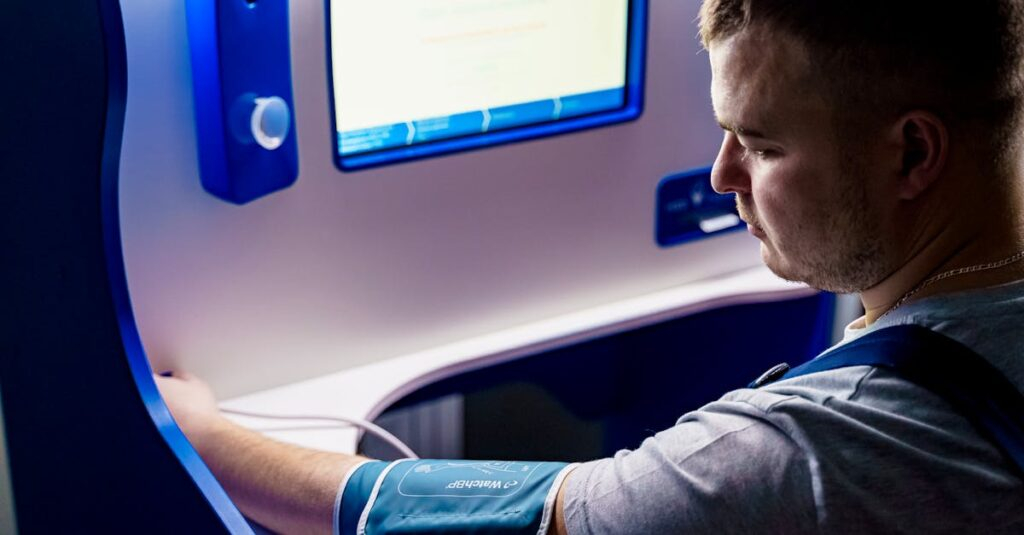
Maintaining healthy blood pressure is essential for overall well-being. High blood pressure, also known as hypertension, can lead to serious health complications if left unmanaged. While most people rely on digital or manual devices to monitor their blood pressure, you might wonder if there’s a way to check it without any machine. Surprisingly, there are several methods and techniques to get an approximate understanding of your blood pressure levels using natural observation and simple tools. Let’s dive into the details!
Why Monitor Blood Pressure?
Understanding your blood pressure is crucial because it helps you:
- Prevent health complications: High or low blood pressure can lead to issues such as heart disease, stroke, or kidney problems.
- Track your health: Monitoring helps in identifying trends and taking timely action.
- Manage stress levels: Blood pressure often reflects your stress levels, making it a good indicator of mental well-being.
- Guide lifestyle choices: Regular monitoring can inspire better eating, exercise, and sleep habits.
While professional medical tools provide the most accurate readings, some simple techniques can give you insights when these are unavailable.
Understanding Blood Pressure Basics
Blood pressure is measured in two numbers:
- Systolic Pressure: The higher number, indicating the pressure in your arteries when your heart beats.
- Diastolic Pressure: The lower number, indicating the pressure in your arteries when your heart rests between beats.
Normal blood pressure typically ranges around 120/80 mmHg, though this can vary depending on age, activity level, and overall health.
Methods to Check Blood Pressure Without a Machine
Here are some practical techniques to assess your blood pressure without any specialized equipment:
1. Pulse Check Using Your Fingers

You can estimate your heart rate, which indirectly gives insights into your cardiovascular health, by feeling your pulse. Follow these steps:
- Find Your Pulse: Place your index and middle fingers on your wrist (radial artery) or the side of your neck (carotid artery).
- Count Beats: Count the number of beats you feel in 30 seconds and multiply by two to get your beats per minute (BPM).
- Compare with Normal Rates: A resting heart rate between 60-100 BPM is generally normal. An unusually fast or slow pulse may indicate blood pressure abnormalities.
2. Observing Symptoms
Your body often gives signs of abnormal blood pressure. Here’s what to look for:
- High Blood Pressure Symptoms:
- Persistent headaches
- Shortness of breath
- Dizziness
- Flushing or redness in the face
- Low Blood Pressure Symptoms:
While these symptoms aren’t definitive, they can alert you to potential blood pressure issues.
3. Breathing and Stress Monitoring
Stress levels often correlate with blood pressure. Try this exercise:
- Sit quietly and take deep breaths.
- Observe your breathing pattern and heart rate.
- Difficulty calming your heart rate or feeling a pounding sensation in your chest might indicate high blood pressure.
4. Hand Squeeze Test
This method assesses cardiovascular strength and can hint at blood pressure trends:
- Grip a soft object like a stress ball tightly for 30 seconds.
- Release and observe how quickly your hand returns to its normal color.
- Delayed recovery might indicate circulation or blood pressure issues.
5. Use of Smartphone Apps
Many smartphone apps claim to estimate blood pressure using your camera or microphone. While not always accurate, they can provide a rough idea. Popular apps include Heart Rate Monitor and Instant Heart Rate.
Lifestyle Tips for Better Blood Pressure Management
To maintain healthy blood pressure, adopt these practices:
- Eat a Balanced Diet: Focus on fruits, vegetables, whole grains, lean proteins, and low-sodium options.
- Stay Active: Aim for at least 30 minutes of moderate exercise daily.
- Manage Stress: Practice meditation, yoga, or deep breathing techniques.
- Limit Alcohol and Caffeine: Excessive consumption can raise blood pressure.
- Get Regular Sleep: Aim for 7-8 hours of quality sleep each night.
When to See a Doctor
While these methods can provide helpful insights, they are not substitutes for professional medical evaluations. Seek immediate medical attention if you experience:
- Severe headaches
- Chest pain
- Vision problems
- Shortness of breath
Additionally, regular check-ups with your doctor can help monitor and manage your blood pressure effectively.
Conclusion
Checking your blood pressure at home without a machine is possible through careful observation and simple techniques. While these methods are not a replacement for professional medical devices, they can help you stay informed about your cardiovascular health. Pair these techniques with a healthy lifestyle and regular medical consultations for the best results.
Visit RajLife.com for more tips and resources on maintaining a healthy lifestyle!









